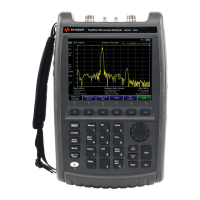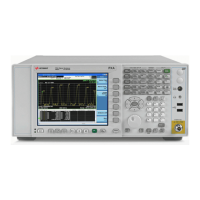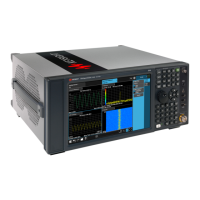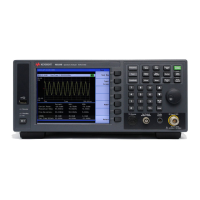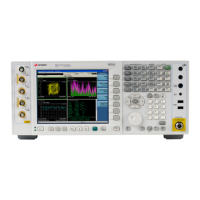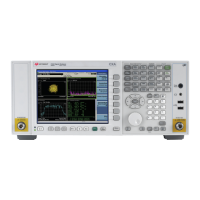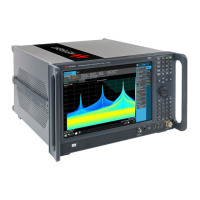5-24 Keysight N9912A Service Guide
Theory of Operation
Operation in Modes
5-
There is no default calibration for two port measurements. Uncalibrated (not
normalized) measurement of a short thru cable typically shows a trace with
some sawtooth characteristics.
SA adjustment results are ignored when in CAT/NA mode. T he “raw”
unadjusted readings are used. There is one exception: the results of the IF
Offset Adjustment are used during CAT/NA modes.
SA Mode
The signal path for SA mode is the same as the input path for two port CAT/NA
modes.
The RF In Atten can be set to 32 different levels: nominal 0 through 31 dB in 1
dB steps. The Attenuator Slope Adjustment determines the correction factors
for each step in each frequency band.
The RF In Atten can be controlled manually or automatically. When in auto
mode, the Reference Level setting determines the attenuator setting.
The Pre-amp can be in or out. Nominal gain of the pre-amp is 22 dB.
The “Attn” and “PA” indicators in the display header give current status. The
Scale/Amptd hard key provides access to control for them.
The displayed measured value for a given signal is automatically compensated
for in the current Attn and PA settings. For instance, if an incoming signal is
measured at -70 dBm with the RF IN Atten set to 5 dB and PA “out”, changing
to PA “in” will give a measured value of approximately -70 (+/- because the 22
dB for the PA is only nominal). The difference seen in the trace will be that the
noise floor of the trace will be lowered by approximately 22 dB. If the RF In
Atten is changed from 5 dB to 15 dB, the measured value will not change
significantly (still approximately -70 dBm) but the noise floor will raise by 10
dB.
SA has two basic modes: step and FFT.
Step mode reads a narrow slice of the spectrum and the LO steps for each
slice. In this mode, a trace on the display is composed from multiple slices.
Generally spans greater than 100 kHz operate in step mode.
FFT mode reads a wide slice of the spectrum and the LO is fixed. In this mode,
a trace on the display is based on a single LO setting.
The LO minimum step size is 2 MHz; this restriction limits spurs.
The hardware operation of the A/D’s is essentially the same for both step and
FFT modes. The difference is the digital signal processing.
The SA adjustments generally correct the gain with 11 frequency bands. See
“SA Frequency Bands” on page 5-9 for a listing of the 11 bands. See the TME
help file for details on SA adjustments.
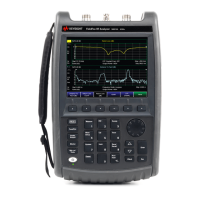
